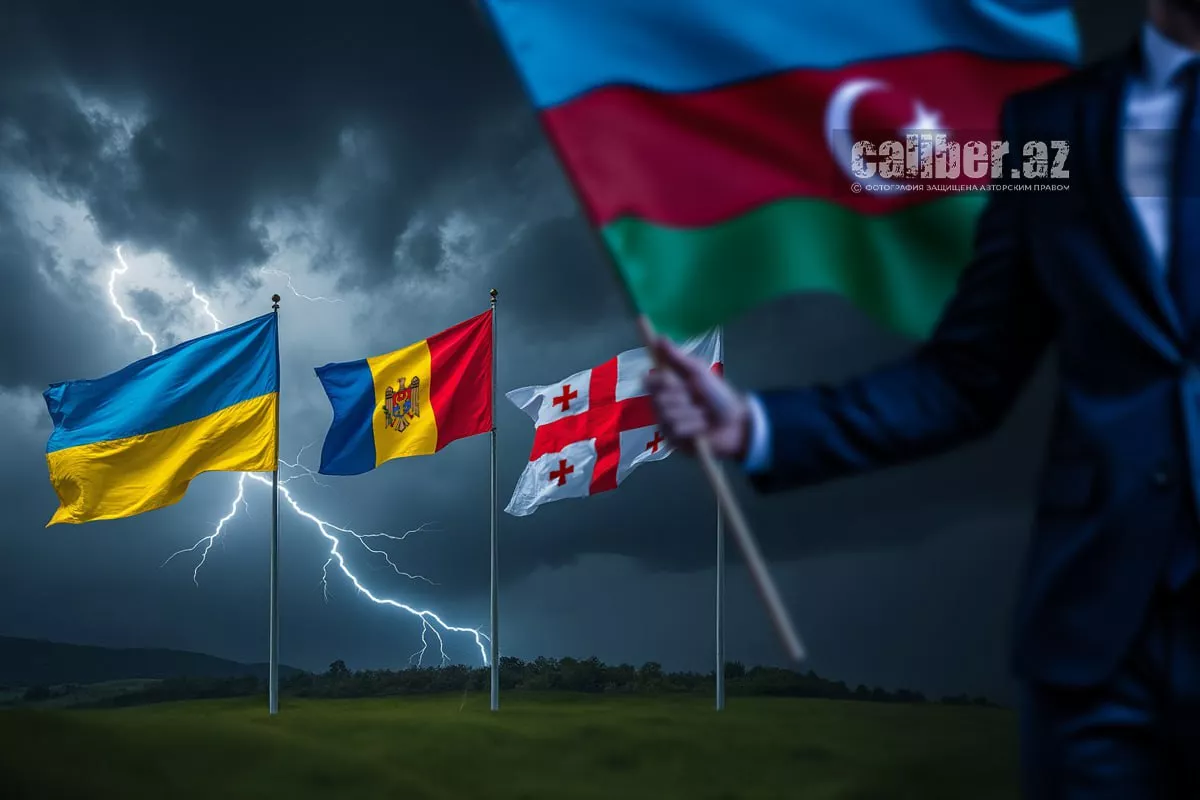How the EU lost the Eastern Partnership A problem without an easy solution
The EU's policy towards neighbouring countries in the South Caucasus and Eastern Europe has always developed under the shadow of its policy towards Russia. A prime example of this is the "Eastern Partnership." Now, this initiative has become a problem without an easy solution, but it is crucial for the EU to learn from the inherent flaws of the "Eastern Partnership" in order to resolve the region's strategic dilemmas.
In the previous article, we began discussing the broader topic that the main long-term dilemmas of the European Union lie to the east, rather than in its transatlantic relations with the United States. It is precisely in the eastern vector that the EU faces variables that truly depend on it, requiring complex decisions and carefully thought-out strategies, which, in turn, will determine the role and place of a united Europe in the future world system. Moreover, the East, in this sense, is not only delicate but also multifaceted. For the European Union, it encompasses China, Russia, and the neighbouring countries in Eastern Europe and the South Caucasus.
When discussing the long-term challenges in relations with Russia, we emphasised that the seemingly alternative and self-sufficient approach many in the EU currently rely on—military deterrence of Moscow through its own militarisation—is insufficient to be considered a comprehensive strategy. Firstly, it is based on irrelevant analytical and emotional parallels with the Cold War. Secondly, without the unifying factor of the American security umbrella over Europe, the priority of military deterrence towards Russia will soon start to provoke internal contradictions within the European Union. Thirdly, the EU, even in theory, will not be able to claim any geopolitical significance in the new world unless it develops a policy towards Russia that combines military deterrence with effective cooperation on various issues.

In this article, we will examine the strategic dilemmas and challenges facing the EU in another part of its eastern vector—the region of its immediate neighbours in Eastern Europe and the South Caucasus. Some of these challenges differ, while others are similar to those identified in the Moscow direction, and at times even identical.
Russia-first policy and the "Eastern Partnership"
This is especially true given that, traditionally, many in the European Union view the Eastern European and South Caucasian neighbours through the Russian lens. Within this logic, where the policy towards Russia is primary (the Russia-first policy), and the approaches to other post-Soviet countries are derivative of this policy. This was relevant until relatively recently, when European states and companies focused on cooperation with Russia, allocating attention and resources to the smaller neighbouring countries as a secondary matter. Essentially, the Russia-first policy remains relevant today, only in reverse: now, many in Brussels and other EU capitals start from the point of confrontation with Russia in their relations with neighbours. In other words, they seek ways to undermine Moscow's interests and capabilities and enhance its deterrence, not only through military means but also by political-diplomatic and economic measures.
In Russia, it is widely believed that this has been the case for a long time. Some even claim that it has always been this way, as the prevailing view in Russian political and intellectual circles today is that the West never intended to reciprocate Moscow's hand of partnership and cooperation extended in the early 1990s. However, when looking retrospectively at the scale of cooperation that actually took place, many would probably disagree with such an assessment.
In any case, it can be stated with a fair degree of certainty that a kind of geopolitical turning point in the EU’s perception of Russia began after August 2008, when the Russo-Georgian war occurred. This is not to address the question of what is right or wrong, or who is to blame. It is simply a statement of fact: it was then that the dominant narrative of an aggressive Russia surfaced across the EU (and the entire West), which gradually laid the long-term foundations for a fundamental shift in policy towards Moscow.
It was then that the initiative of the foreign ministers of Sweden and Poland emerged, which later became known as the "Eastern Partnership." The idea was simple. The existing European Neighbourhood Policy (ENP), established in 2003, was deemed insufficient for constructing a comprehensive regional policy for the EU, and therefore, the Union lacked effectiveness in working with the entire Eastern neighbourhood. Moreover, by that time, a framework for systematic cooperation with countries in the South had already been established with the Union for the Mediterranean. As an analogous framework for working with neighbours to the east, the "Eastern Partnership" initiative was launched on May 7, 2009, at the summit in Prague.
However, the idea that appeared simple was not so easy to implement. The goal of the partnership was formulated as "to create the necessary conditions to accelerate political association and further economic integration" between the EU and the partner countries. In addition to the EU members, the program included three countries from the South Caucasus and Eastern Europe: Azerbaijan, Armenia, Belarus, Georgia, Moldova, and Ukraine. Despite their shared Soviet history and regional affiliation, these six countries already had more differences than similarities in their political priorities and aspirations, as well as in their perception of the needs and risks for their own development. They also viewed their relationships with the European Union very differently.

Nevertheless, although the EU formally declared a differentiated approach to its partner countries, in practice it built the Eastern Partnership largely along the same lines as the European Neighbourhood Policy, adding a strong regional component in the form of multilateral cooperation platforms. The ENP, in turn, approached relations with neighbouring countries as if it were not about establishing mutually beneficial, systemic cooperation between self-sufficient actors, but about an inevitable ultimate desire of partner countries to become EU members.
In other words, Brussels reduced the core philosophy of the Eastern Partnership to an extension of its enlargement policy. EU officials did so not only out of a general aspiration to reshape their neighbours in their own image, but also from a firm belief that "enlargement policy is the most effective EU foreign policy instrument and one of the Union's most successful policies." As a result, they confidently and persistently embedded the principle of conditionality into the methodological foundation of the partnership—continually requiring partner countries to meet EU-defined standards as a prerequisite for meaningful cooperation.
For half of the partner countries—Ukraine, Moldova, and Georgia—this approach at some point appeared workable and potentially effective, as they explicitly declared the political goal of maximising their alignment with the EU and eventually joining it as full members. However, the other half of the partners—especially Azerbaijan and Belarus—sought something entirely different from the Eastern Partnership. They viewed the initiative as a framework for expanding and deepening mutually beneficial cooperation between equal partners across a wide range of issues. For them, the desired outcome was not future EU membership, but close collaboration through concrete projects with tangible, practical results.
These differences in goals and their interpretation became the Eastern Partnership’s primary birth trauma—one that from the outset constrained the potential of this multilateral regional cooperation initiative and sharpened the EU’s own policy dilemmas regarding the region. Another original flaw of the Partnership, arguably, was the anti-Russian bias present among certain participating states and institutions. This bias made it impossible to build a successful long-term cooperation framework in the region. However, for a long time, this bias remained largely latent—held in check initially by the majority and later by some partner countries that prevented the Eastern Partnership from turning into a purely anti-Russian geostrategic project.
The Eastern Partnership is dead. Long live the Eastern Partnership?
Despite these foundational flaws and other challenges, for at least a decade the Eastern Partnership delivered tangible benefits to both the region as a whole and to individual participants. It served as a platform for launching and implementing a large number of diverse projects on both multilateral and bilateral levels. Most of these were apolitical in nature, contributing to enhanced regional connectivity and creating new opportunities for cooperation and development—particularly in the business sphere.
However, over time it sadly became increasingly clear that these foundational flaws would prevent the initiative from developing successfully—especially as geopolitical tensions in the region escalated. Already around 2017–2018, the countries that had declared their ambition to become part of a united Europe began advocating for the division of the Eastern Partnership into two leagues. The proposal was to place in the “top league” those states that had signed Association Agreements with the EU and were seeking to move toward eventual accession. The “second league” would consist of the remaining countries, which continued to prioritise pragmatic cooperation and had no ambition for deeper integration.
For a while, the EU managed to contain and deflect the push for splitting the Eastern Partnership. However, events in the region soon took a far more dramatic turn.

Following the presidential election in Belarus in August 2020, the European Union began imposing unprecedentedly broad sanctions on the country, while also restricting cooperation and even official contact with Minsk. Under these conditions, the Eastern Partnership—already limited for Belarus to only its multilateral component (as the absence of a basic agreement with the EU had long blocked any bilateral engagement)—lost much of its practical value for Minsk. As a result, the Belarusian authorities decided to suspend the country’s participation in the initiative (it is worth noting, however, that Minsk opted to freeze its involvement rather than formally withdraw from the programme altogether). This alone significantly undermined the original multilateral framework of the regional cooperation initiative.
Then came the breaking point. Following the outbreak of the Russia–Ukraine war, the Eastern Partnership became entirely dysfunctional. Today, it exists only on paper—sustained merely by the inertia of bureaucratic mechanisms and procedures embedded within EU institutions and member states. Yet, the European Union has not officially abandoned the initiative, nor has it declared its termination.
In effect, the Eastern Partnership has turned into a political "white elephant"—a once-ambitious framework that no longer serves its purpose, satisfies no one, and is completely misaligned with the new geopolitical realities. Still, Brussels appears unsure of what to do with the array of formally existing programmes, as well as the departments and officials tasked with overseeing them. This very situation starkly illustrates the broader strategic dilemmas the EU faces in its policy toward its eastern neighbourhood—dilemmas it must confront if it hopes to retain any relevance or influence in the region.
Clearly, until there is greater clarity on how the Russia–Ukraine war might end, the EU will remain unable to make any strategic decisions regarding the future of the Eastern Partnership. Nevertheless, it is already crucial to begin considering the basic outlines of a new regional policy to replace it.
Beyond moving away from the original flaws embedded in the Prague Declaration and reinforced throughout the Partnership’s evolution, the EU must determine what kind of policy—and accompanying institutional framework—could once again make Eastern Europe and the South Caucasus regions of growing cooperation rather than persistent security risks. In this regard, the most constructive future philosophy for the EU’s eastern policy would be one of détente through pragmatic regional cooperation. How the EU might put such a philosophy into practice will be the subject of our next discussion.








